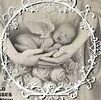5 Reasons to Donate Wedding Dresses
If you haven’t worn your wedding dress since your big day or you’ve realized that it’s too small to make a good reuse, consider donating it. Several local and national charities accept wedding dresses for use as part of charity events or to sell in their stores. Some charities also provide a tax deduction for the donation, which can offset the cost of a new wedding dress or even make it free. A common repurposing option is to create a unique throw blanket or a decorative pillow using pieces of the gown and its lace. You can find tutorials for this on sites like Craftsy or DIY Network. This is also a fun project to do with your kids or to give as a gift for a loved one. Some charities, such as Brides Against Breast Cancer, take donated wedding dresses and resell them to raise money for early breast cancer detection and other women’s causes. Other nonprofits, such as Brides for a Cause, are based in the United Kingdom and support brides who can’t afford to buy a dress for their special day by providing discounted dresses. Another way to repurpose your wedding dress is to donate it to an organization that transforms it into infant burial gowns, or Angel Gowns. These are provided to hospitals, birthing centers, funeral homes, or directly to grieving families. One such organization is Angel Gowns of the Capital Region, based about an hour north of Albany, NY. The pandemic has caused many people to experience financial hardship, including couples preparing to get married. Many bridal shops are accepting gowns to help brides who can’t afford to purchase a brand-new dress during this difficult time. This is a great way to show your support and help those in need. You can also give your dress to a thrift store or resell it online to raise money for charity. Just be sure to check with the charity or store to see what their specific requirements are and if they require a donation fee. Also, consider having the dress cleaned professionally before you donate it. This will ensure that the fabric is in good condition and doesn’t contain any stains or marks. Donate your wedding dress to a charitable organization and feel good about yourself at the same time. You’ll also make room in your closet and possibly get a tax deduction for the donation. A lot of clothing and textiles end up in landfills, where they release carbon dioxide and other toxins into the air. However, donating your wedding dress and other items that you no longer use can reduce the impact on the environment. According to GreenDrop, this is a simple way to make a difference in the world. Besides, a used wedding dress is much more eco-friendly than buying a new one!
